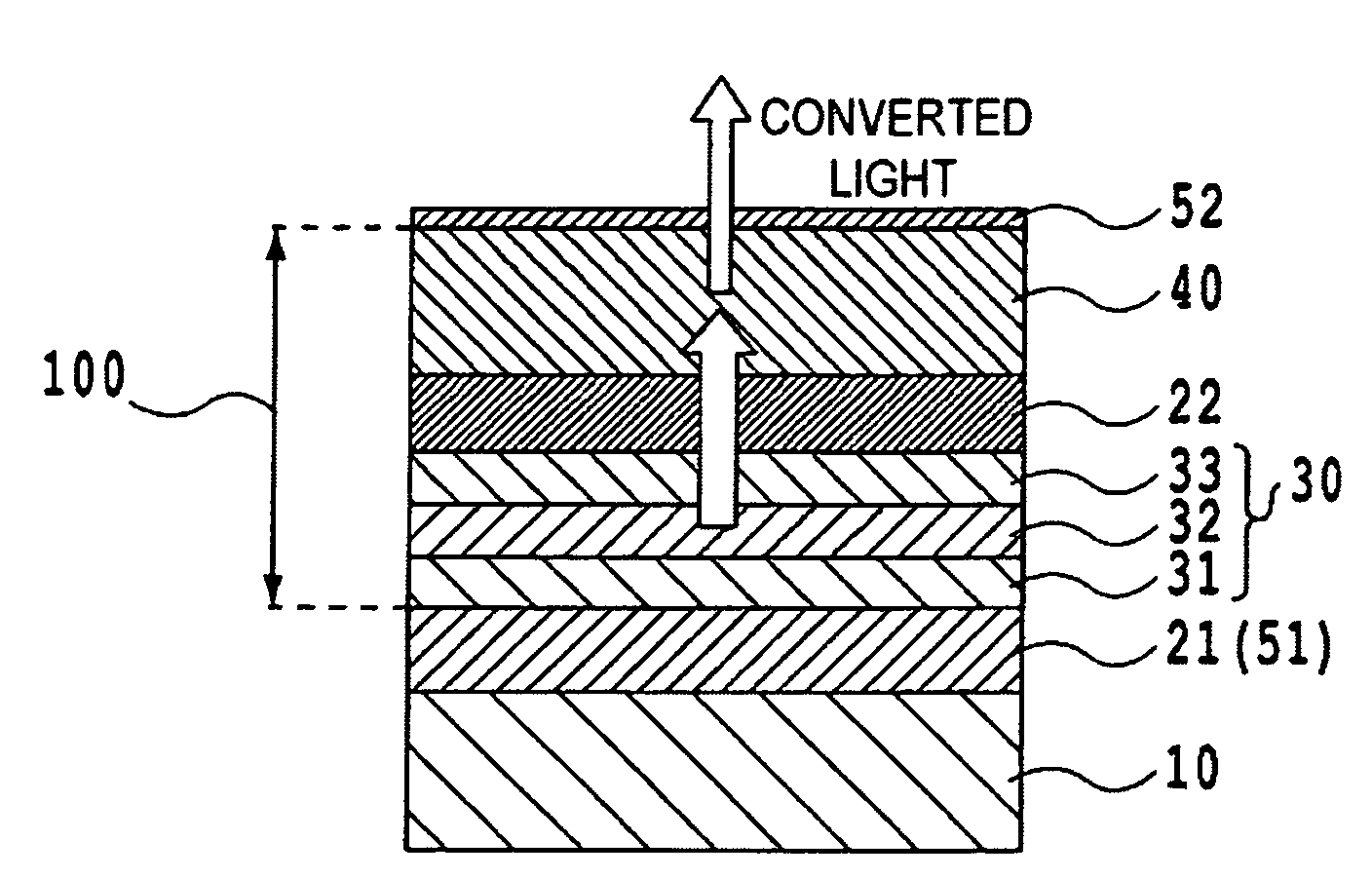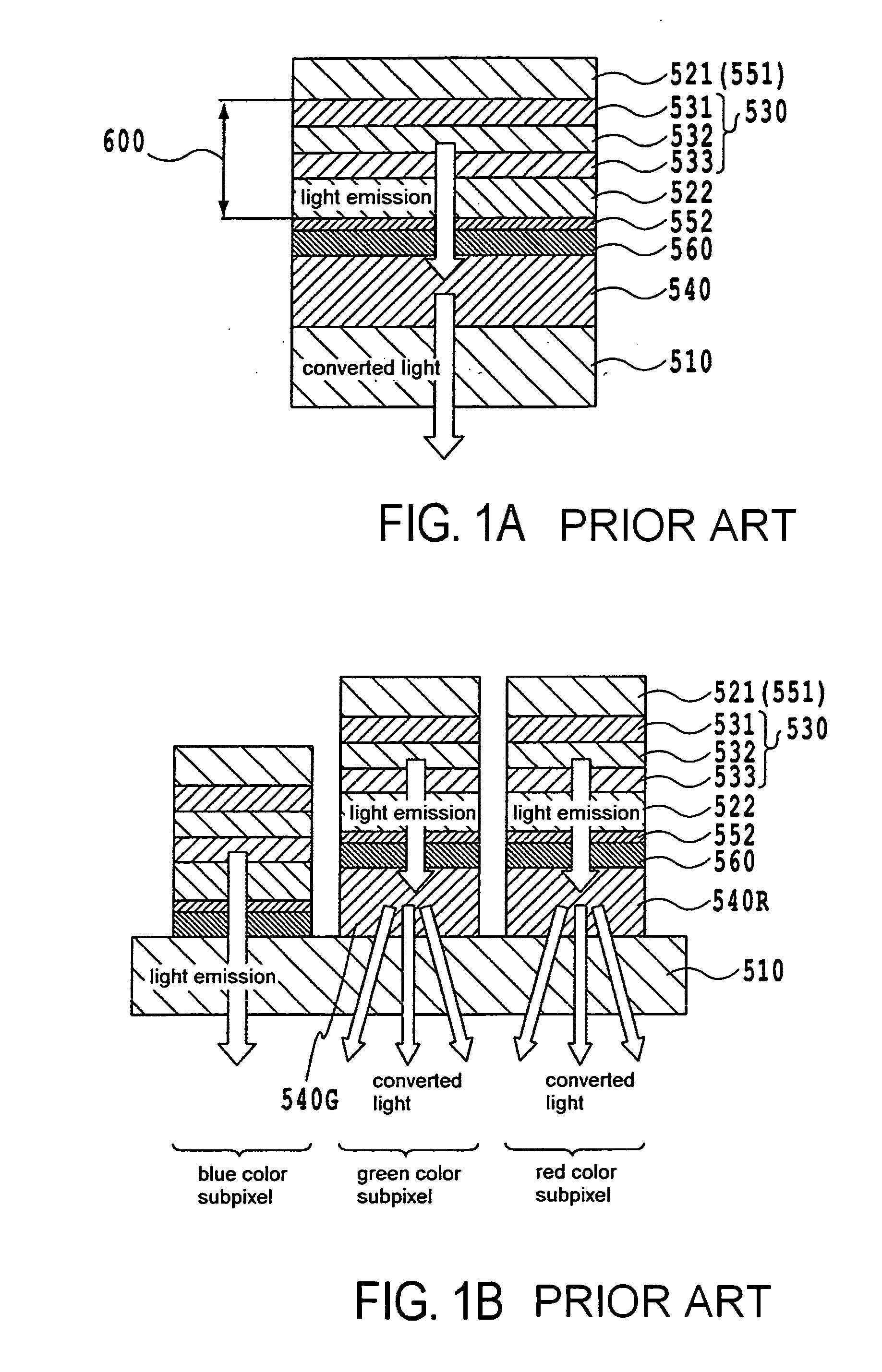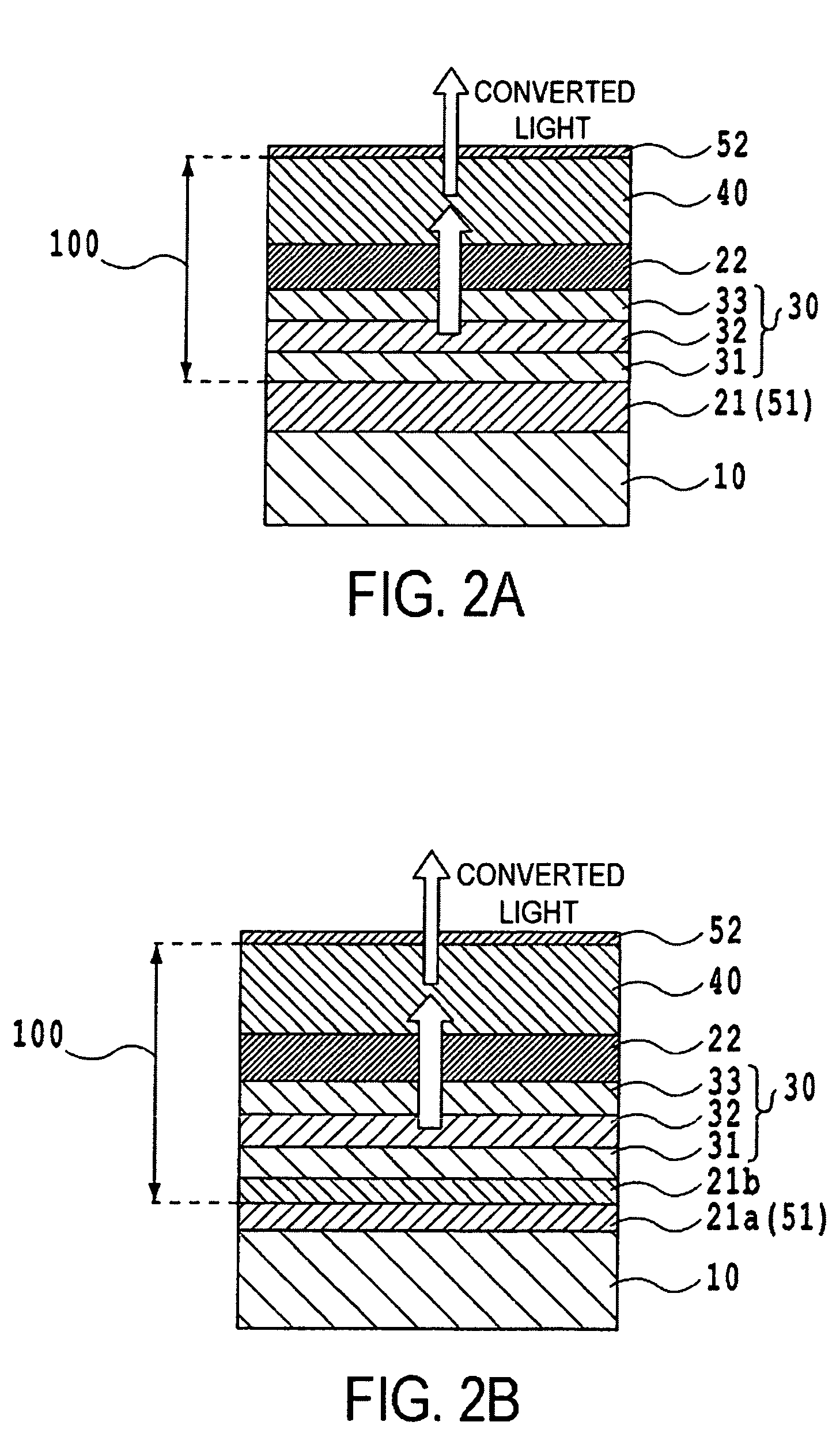Resonant cavity color conversion el device and organic el display device using the same
a color conversion and display device technology, applied in the direction of discharge tube/lamp details, discharge tube/solid-state device testing/measurement, discharge tube/lamp details, etc., can solve the problems of complex manufacturing process, light emission efficiency, and difficulty in making up a complete display device, and achieve high luminance color, simple manufacturing method, and high efficiency
- Summary
- Abstract
- Description
- Claims
- Application Information
AI Technical Summary
Benefits of technology
Problems solved by technology
Method used
Image
Examples
example 1
Resonant Cavity Color Conversion EL Element Emitting Red Color Light
[0095]A substrate of Corning 1737 glass having dimensions of a length of 50 mm, a width of 50 mm, and a thickness of 0.7 mm was prepared, cleaned with alkali detergent, and rinsed thoroughly with deionized water. On the cleaned substrate, a silver alloy (APC-TR, a product of Furuya Metal Co., Ltd.) was deposited to form a 100 nm-thick silver alloy film by a DC magnetron sputtering method. On the silver alloy film, a film of photoresist (TFR-1250, a product of Tokyo Ohka Kogyo Co., Ltd.) having a thickness of 1.3 μm was spin-coated and dried in a clean oven at 80° C. for 15 min. On the photoresist film, ultraviolet light was irradiated by a high-pressure mercury vapor lamp through a photomask having a stripe pattern with a width of 2 mm. Being developed with a developer (NMD-3, a product of Tokyo Ohka Kogyo Co., Ltd.), a photoresist pattern with a width of 2 mm was created on the silver alloy thin film. After etching...
example 2
Resonant Cavity Color Conversion EL Element for Red Color Light Emission
[0101]A resonant cavity color conversion EL element for red color light emission was obtained in the same procedure as in Example 1 except that the thickness of the color conversion layer was changed to 330 nm and the thickness of the semi-transparent reflective layer was changed to 20 nm.
example 3
Resonant Cavity Color Conversion EL Element for Green Color Light Emission
[0104]A resonant cavity color conversion EL element for green color light emission was obtained in the same procedure as in Example 1 except that a color conversion layer was formed by depositing solely Alq3 and the thickness of the color conversion layer was changed to 230 nm. FIG. 7 shows an emission spectrum of the obtained element. Table 2 shows evaluation results on chromaticity and electric current efficiency (at a current density of 10 mA / cm2). The results of FIG. 7 and Table 2 have demonstrated that introduction of a microcavity structure in the invention gives green color light with excellent color purity even by using Alq3, which exhibits a broad emission spectrum as for a green color conversion dye. The interface that exhibited largest difference in refractive index within the microcavity structure in this Example 3 was also the interface between the electron injection layer (lithium-doped Alq3, ref...
PUM
 Login to View More
Login to View More Abstract
Description
Claims
Application Information
 Login to View More
Login to View More - R&D
- Intellectual Property
- Life Sciences
- Materials
- Tech Scout
- Unparalleled Data Quality
- Higher Quality Content
- 60% Fewer Hallucinations
Browse by: Latest US Patents, China's latest patents, Technical Efficacy Thesaurus, Application Domain, Technology Topic, Popular Technical Reports.
© 2025 PatSnap. All rights reserved.Legal|Privacy policy|Modern Slavery Act Transparency Statement|Sitemap|About US| Contact US: help@patsnap.com



